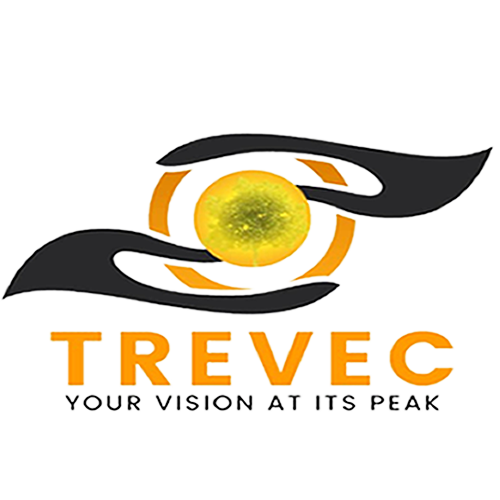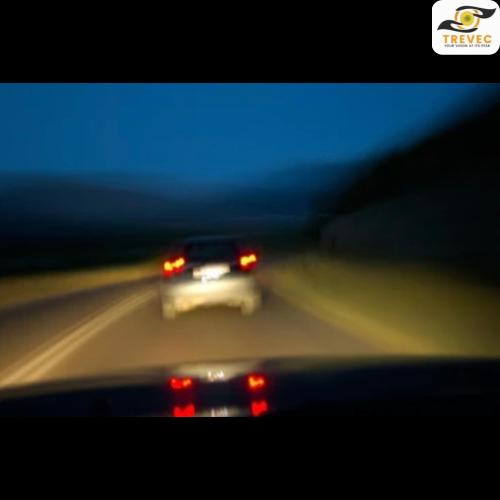Vision plays a crucial role in driving, as it enables drivers to Judge Distances and speeds, detect or recognize objects, pedestrians, and vehicle, react to unexpected situations, navigate through different lighting conditions (day, night, dusk, dawn) and also read road signs and markings.
The ability for a driver to do all those mentioned above, some visual functions are necessary for safety while driving.
WHAT ARE THE VISUAL FUNCTIONS NECESSARY FOR SAFETY WHILE DRIVING?
Visual skills for driving include:
- VISUAL ACUITY: Studies have shown that visual acuity alone is not a sufficient indicator to gauge driving performance. However, it is important because it measures the clarity of vision (clearness of vision), how you can see clearly, and is measured by reading letters on an eye chart. The test determines the need for glasses, contact lenses, or prescription adjustments.
- DISTANCE VISION: Clear vision is essential for safe driving. The slightest reaction time can be as short as 0.4 seconds. Poor distance vision increases the risk of hazards until it is too late to respond safely. As driving speed increases, reaction time decreases, making poor distance vision dangerous, because when combined with excessive speed, it can lead to disastrous consequences. Distance vision can also be affected by the condition of the car windshield and the driver’s glasses (if worn). Both should be clean and free of scratches and dust, as these can significantly reduce vision during the day and night.
- PERIPHERAL VISION: The ability to see both sides while driving is necessary. Drivers need to be able to see cross traffic, pedestrians, and animals at the roadside without having to look away from the road ahead. To ensure the awareness of your surroundings while driving, make the best use of the side, rear-view mirrors and adjust them correctly.
- DEPTH PERCEPTION: The ability of a driver to judge distances well to pass other vehicles and change lanes, especially in traffic, cannot be over-emphasized, as this is one of the visual functions that necessitates safe driving.
- COLOR VISION: A driver with good color vision can recognize or identify traffic lights, signs or signals, and brake lights.
- ACCOMMODATION (NEAR VISION FOCUSING): A driver is supposed to look from the road to the dashboard and back again quite often, when driving. The ability to change focus from far to near is called accommodation (near vision focusing). From age 45, most people have increasing difficulty with near vision, which may require glasses to see the dashboard properly.
- CONTRAST SENSITIVITY: Contrast sensitivity indicates how well people can see in low-contrast lighting situations, including the lighting experienced at dawn, in fog, when glare is present, and at night. Contrast sensitivity is essential for drivers. It helps to see pedestrians, lights, and road signs in bad weather and at night. To be a good driver, you need to see well under low-contrast conditions and perform tasks such as detecting low-contrast objects on a dark road, see through oncoming headlights that create glare, correctly identify dimly lit road signs and many other driving requirements that do not involve high-contrast or black-and-white viewing conditions. For this reason, several studies have shown that visual acuity is not a good predictor of driving performance and safety, while contrast sensitivity is a good predictor.
- NIGHT VISION: Drivers need to be able to see in low and variable light conditions. The eyes are much slower to adapt to night-time light levels after experiencing bright light exposure. Being outside in the sun for only a few hours can slow the dark adaptation process, so you might not have your normal night vision for several hours after dark. You can help prevent temporary loss of night vision by wearing sunglasses or photochromic lenses during the day, especially if you are aged 40 or older, as night vision tends to deteriorate after this age.
- GLARE RECOVERY: The ability to adjust to sudden changes in light and recover quickly from the glare of oncoming headlights. Glare recovery is best in drivers under the age of 30.
Good vision is essential for safe driving. If you have concerns about your vision or driving abilities, consult an eye care professional at TREETOP VISION EYE CENTER (TREVEC), the best eye clinic in Utako, Abuja.
TREVEC CARES!!!



Nice and interesting art
Always good to know. Well done Trevec.
Thank you
Thank you for your kind words